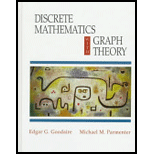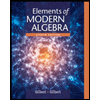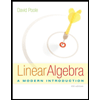
Let S be the set of all real numbers in the interval
Trending nowThis is a popular solution!

Chapter 3 Solutions
Discrete Mathematics with Graph Theory (Classic Version) (3rd Edition) (Pearson Modern Classics for Advanced Mathematics Series)
Additional Math Textbook Solutions
Discrete Mathematics and Its Applications ( 8th International Edition ) ISBN:9781260091991
Finite Mathematics with Applications In the Management, Natural, and Social Sciences (12th Edition)
A Survey of Mathematics with Applications (10th Edition) - Standalone book
Finite Mathematics for Business, Economics, Life Sciences and Social Sciences
Numerical Analysis
Calculus for Business, Economics, Life Sciences, and Social Sciences (14th Edition)
- 3. Let be an integral domain with positive characteristic. Prove that all nonzero elements of have the same additive order .arrow_forwardShow that the converse of Eisenstein’s Irreducibility Criterion is not true by finding an irreducible such that there is no that satisfies the hypothesis of Eisenstein’s Irreducibility Criterion.arrow_forwardLet A be a set of integers closed under subtraction. a. Prove that if A is nonempty, then 0 is in A. b. Prove that if x is in A then x is in A.arrow_forward
 Elements Of Modern AlgebraAlgebraISBN:9781285463230Author:Gilbert, Linda, JimmiePublisher:Cengage Learning,Algebra & Trigonometry with Analytic GeometryAlgebraISBN:9781133382119Author:SwokowskiPublisher:Cengage
Elements Of Modern AlgebraAlgebraISBN:9781285463230Author:Gilbert, Linda, JimmiePublisher:Cengage Learning,Algebra & Trigonometry with Analytic GeometryAlgebraISBN:9781133382119Author:SwokowskiPublisher:Cengage Linear Algebra: A Modern IntroductionAlgebraISBN:9781285463247Author:David PoolePublisher:Cengage Learning
Linear Algebra: A Modern IntroductionAlgebraISBN:9781285463247Author:David PoolePublisher:Cengage Learning


